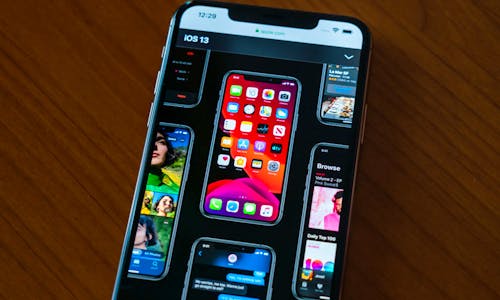Sony Ericsson had some serious catching up to do with the Android crowd after their quite frankly pants X10. What was a nice looking phone was marred by an irritatingly slow, over-skinned version of Android. Thankfully they have gone away and done some thinking and come back with what could be one of their best handsets yet: the Xperia Arc.
What we like
The first thing you will notice about the phone is how thin it is, at just 8.7mm it feels like an iPhone 4 on a diet. The curved back fits great in the hand and is perfect for balancing the phone on the shoulder for some hands-free phone call action.
From the front the Arc looks great, we particularly like the combination of that massive 4.2” touchscreen (which we will talk about later) and the subtle silver Android buttons. In between the Android keys are tiny white bulbs which light up whenever keys are pressed, it is a cool effect especially when using the handset at night.

Which brings me on to what is probably the best part of the Arc: its screen. What Sony Ericsson calls a “ 4.2 inch Reality Display with Sony Mobile BRAVIA Engine” is basically a miniature high end flatscreen television tacked onto a smartphone. Video in particular looks fantastic with deep blacks and smooth motion. Viewing angles are great and the screen is easy to use in direct sunlight (unlike the Xperia Play). We also found that the display technology didn’t put too much strain on the battery, giving us the now ubiquitous one day without charge found on most smartphones.
The 8.1 megapixel camera found on the back of the phone is also a highlight of the Arc’s hardware. A proper CMOS sensor with Sony Exmor R tech allows for some of the best imaging from a mobile yet. Stills and video have well balanced colours and little noise unless the camera is used in very low light situations. The camera app is also very good and includes things like ‘smile recognition’ and different scene modes. Viewing pictures taken can also be done from within the application simply by sliding a tray out which sits to the side of the display. I tested out some of the video shot using the Xperia Arc on a big flatscreen television using the handsets HDMI out and was relatively impressed. Things weren’t quite Flip camera quality but for a mobile phone camera there isn’t much better competition out there.
Included with the Arc is an 8GB microSD card and a set of pretty decent earbud headphones. The media player is no iPod but it keeps up with most of the Android competition. There is a dedicated button for finding YouTube and online content about the artist you are listening to which is a nice feature. A media button at the bottom of the home screen will take you directly to either the Android gallery, music player or FM radio. We particularly liked the inclusion of an FM radio, as exciting as streaming content from the internet is, it is a serious data saver when it comes to your monthly allowance.
Sony Ericsson’s redesigned TimeScape widget thankfully no longer slows the phone down. Once set up it acts as a ‘one stop shop’ for all your social networking needs, pulling in feeds from Facebook and Twitter along with text messages and contacts. I completely overloaded the five home screen available with widgets and not once did TimeScape lag. The news and weather widgets included are also relatively restrained and offer the simple functionality needed without overcrowding home screens. Sony Ericsson has done a really good job reigning in its initial excitement over Android design and created software which compliments rather than slows the operating system.
What we don’t like
Some may appreciate the two tone approach to the colour scheme on the back of the handset but personally we don’t. Things also feel slightly too plasticky, with the size and weight of the Arc giving it an overly flimsy quality.
Connection-wise the Arc feels somewhat confused, with various bits and bobs tacked onto the phone presumably wherever Sony Ericsson could fit them. Why for example is the 3.5mm headphone jack on the side? This means that any set of headphones connected will have their cables bent when they are in your pocket, something which often results in them breaking. Instead the mini HDMI output is on the top, precisely where the headphone jack should be.
Sony Ericsson seem to have a slight obsession with putting things on the side of their technology. The Arc’s charger has its’ cable mounted on the side and is connected to the phone…you guessed it…on the side. This means when you plug the charger in that any other large plugs next to it have to be disconnected, very irritating indeed.
Conclusion
The Xperia Arc feels very much like the go to handset for Sony Ericsson fans. It also makes a nice change from the usual HTC/Samsung-orama that Android has become. The Arc benefits from Sony’s imaging and display pedigree and boasts one of the best handsets screens currently available. The lack of a dual-core processor was relatively unnoticeable and a decent battery life and bundled set of headphones made the Arc’s hardware package difficult to ignore. The inclusion of Android 2.3 also means that current users of a less recent version of Google’s OS will find their applications automatically downloaded once they sign in on the Arc. It no longer feels like there is a risk involved in picking up one of Sony Ericsson’s Android handsets, instead the Arc feels very much like a return to form for the manufacturer.
Specification
| OS | Android |
|---|





Leave a Reply